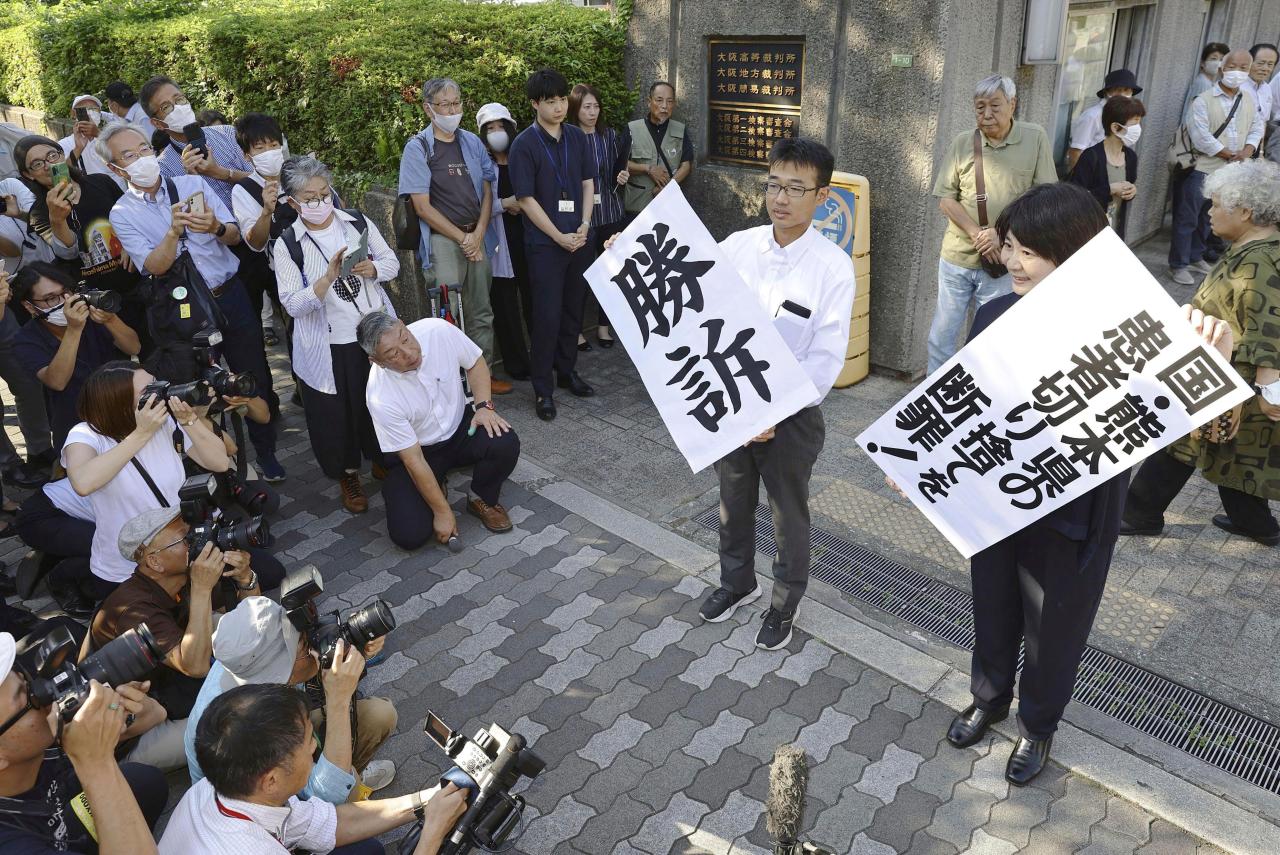A Japanese district court on Wednesday ordered the state and others to pay a total of 350 million yen ($2.3 million) in damages to 128 unrecognized sufferers of the Minamata mercury-poisoning disease, making it the first such ruling among similar lawsuits filed nationwide over the country’s redress measure.
The Osaka District Court recognized that all of the plaintiffs in the lawsuit, who were not eligible for relief payments under a special law that went into force in 2009, were victims of Minamata disease, with their lawyers welcoming the judgment as a “complete victory.”
The disease, formally acknowledged by local health authorities in 1956, has been traced to mercury-tainted water dumped into the sea by a Chisso Corp. chemical plant in Minamata in Kumamoto Prefecture, southwestern Japan.
Relief efforts have continued since the illness, which paralyzes the central nervous system and causes birth defects, was confirmed, but legal battles have continued for sufferers who have been left out of the measures.
In the lawsuit filed with the Osaka District Court, the plaintiffs sought a total of 576 million yen in damages against the state, Kumamoto Prefecture and Chisso, asserting that judging the eligibility of the redress measures based on an individual’s residential areas and age was unjust.
In the ruling, Presiding Judge Yuki Tatsuno said that Minamata disease was the only plausible explanation for the symptoms experienced by the plaintiffs.
The ruling also said it is possible to develop the disease even in areas and age groups not covered under the 2009 special measures law if individuals ingest methylmercury by heavily consuming polluted fishery products.
The plaintiffs are aged 51 to 87 and hail from Osaka and 12 other prefectures. The lawsuit was originally filed in September 2014.
Each plaintiff was seeking 4.5 million yen in compensation, claiming their symptoms, including limb numbness, were caused by eating seafood contaminated with the methylmercury wastewater from the Chisso plant when they were children.
The defendants had argued that the plaintiffs did not meet the government’s criteria for patient certification and had not received mercury exposure significant enough to cause Minamata disease.
The court, which recognized the possibility of delayed onset of symptoms, ruled that the 20-year statute of limitations for compensation claims did not apply in this case as 20 years had not elapsed since the victims were diagnosed with the disease.
The Osaka plaintiffs’ legal team issued a statement saying that the ruling “harshly condemned the defendants for abandoning the patients.”
Environment Minister Shintaro Ito told reporters that the central government has not yet confirmed the details of the ruling but added that it will consider its response with other stakeholders.
He stopped short of pledging to revise the special measures law, only saying that the government will “respond after examining” the matter.
Similar lawsuits are under way in Tokyo, Niigata, and Kumamoto district courts. More than 1,700 plaintiffs are involved in the four lawsuits, but pundits say there could be more victims.
The 2009 special measures law was created in the hope of bringing a final settlement in the dispute over relief measures to unrecognized patients struggling with certain symptoms.
About 38,000 people each received 2.1 million yen in lump-sum payments under the law. But there have still been individuals who failed to meet the requirements, which included being born no later than November 1969.
It was not until 1968 that the Japanese government recognized Minamata disease as caused by industrial pollution and stopped the water discharge.
Registration for the relief measures also closed in July 2012, sparking criticism that many lost the chance to apply.
One of the plaintiffs, Kazuyo Kurata, an 80-year-old who lives in the city of Osaka, said she felt vindicated for her efforts after hearing at the court the ruling, which awarded each plaintiff 2.75 million.
Her application for relief was rejected in 2014 because the area where she used to live in Kumamoto Prefecture was not covered under the special law. She may have been able to receive compensation if she could prove that she had eaten a lot of fish, but she believes such a thing is “impossible unless you have kept receipts.”
“I am happy — this sums up everything,” she said about the ruling.
Source : Kyodo News










